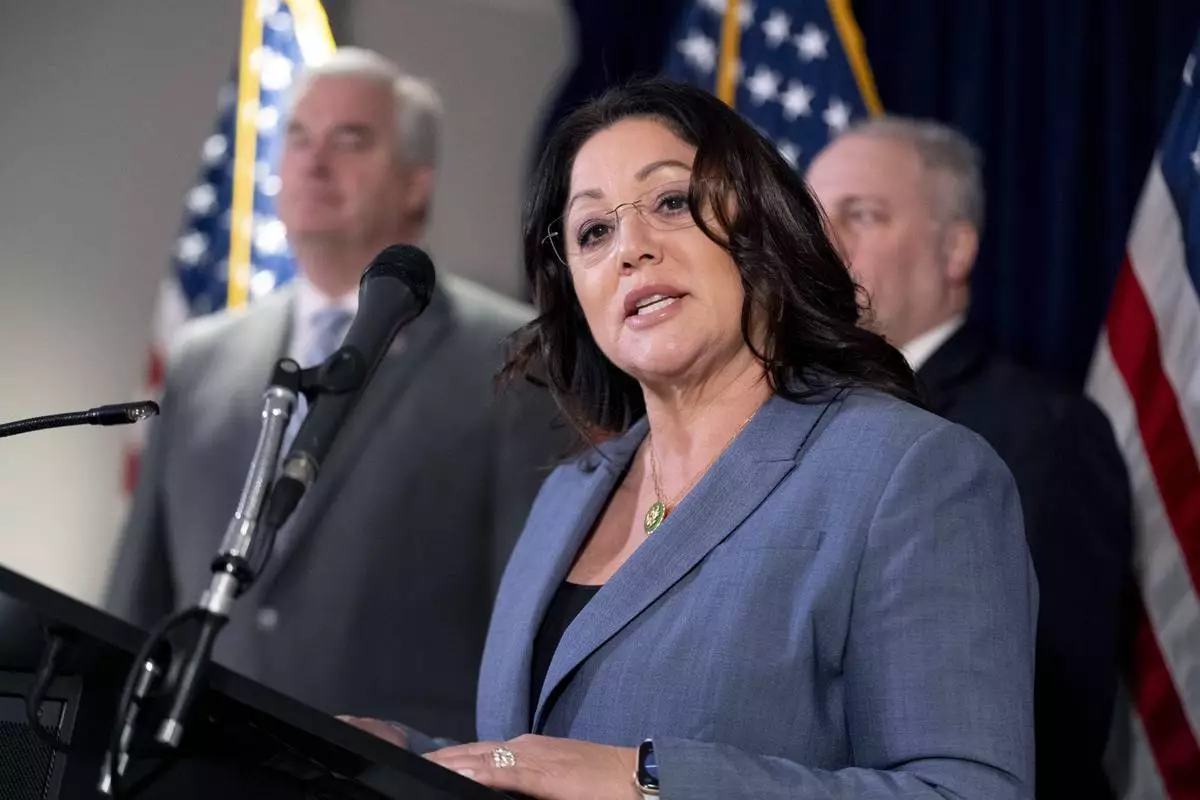PORTLAND, Ore. (AP) — In their battle for Congress, national Republicans and Democrats are keenly eyeing the Pacific Northwest, where two of the most competitive U.S. House races in the country are playing out.
Oregon’s GOP-held 5th Congressional District and Washington state’s Democratic-held 3rd Congressional District are considered toss-ups, meaning either party has a good chance of winning.
Both districts are purple — meaning a blend of Republican red and Democratic blue — and feature freshman incumbents who narrowly flipped their seats in the 2022 midterms. And with turnout typically higher in presidential elections than in midterms, political experts say they’ll be watching to see which candidates are able to mobilize more voters — especially moderates and independents.
“These races could determine who controls the House of Representatives in the next Congress,” said Chandler James, assistant professor of political science at the University of Oregon. “The Pacific Northwest is kind of where the center of a lot of action is.”
An intense rematch is playing out in southwest Washington, where first-term Democratic Rep. Marie Gluesenkamp Perez is defending her seat against Donald Trump-backed Republican Joe Kent. Both candidates are trying to frame the other as the extreme choice.
The Republican-leaning district featuring sprawling farmlands as well as the suburbs of Portland, Oregon, narrowly went for Trump in 2020, making it a crucial target for the GOP this year.
Gluesenkamp Perez has sought to showcase herself as an independent-minded moderate. Her actions during her tenure have ranged from co-sponsoring a bill to protect medication abortion to voting in favor of a resolution rebuking Vice President Kamala Harris’s role in the handling of the U.S.-Mexico border. She was also ranked by the Lugar Center and the Georgetown University McCourt School of Public Policy as having one of the most bipartisan voting records in the U.S. House.
She has outraised Kent, bringing in $6.7 million compared to his $1.4 million, according to the most recent quarterly federal campaign finance records.
Kent, a former Green Beret who has promoted Trump’s lie that the 2020 election was stolen, has blamed his opponent for things he sees as bad policy by the Biden administration, including its border policy. He has cited inflation and illegal immigration as top concerns while seeming to dull down some of his more extreme positions. In the past on social media he has called abortion an “evil stain on our humanity,” but in a debate on Monday, he said he doesn’t support a federal ban.
“He is saying exactly what the pollsters tell him to, but we know what he believes,” Gluesenkamp Perez said in response.
Both have honed in on the economic issues plaguing parts of the region, especially the rural areas, according to Mark Stephan, associate professor of political science at Washington State University Vancouver.
“They’re both trying to claim that they care more than the other one about small communities, rural areas, the economic vitality of Southwest Washington,” he said.
Gluesenkamp Perez came out of nowhere to narrowly win the seat two years ago against Kent in a district that hadn’t been in Democratic hands for over a decade. She replaced Jaime Herrera Beutler, a more moderate Republican who lost the 2022 primary in part because she voted to impeach Donald Trump after the Jan. 6 insurrection.
There is no registration by party in the state, but for presidential primaries, Washingtonians must declare a party. In the primary this March, Republican voters outnumbered Democrats by nearly 30,000 in the district. However, a spokesperson from the Secretary of State’s office cautioned that this doesn’t indicate who will win.
The boundaries of Oregon’s 5th District were significantly redrawn following the 2020 census. It encompasses disparate regions spanning part of Portland and its wealthy and working-class suburbs, as well as rural agricultural and mountain communities and the fast-growing central Oregon city of Bend on the other side of the Cascade Range.
In the 2022 midterms, the first elections to be held in the 5th after redistricting, GOP U.S. Rep. Lori Chavez-DeRemer flipped a seat that had been held by Democrats for roughly 25 years. But this November, she’s facing a different opponent — Janelle Bynum, a state representative who previously beat her in legislative elections in the district and has the backing and funding of national Democrats.
Bynum was elected to the Oregon House in 2016, representing the suburbs southeast of Portland. She says she would seek to codify the abortion protections of now-overturned Roe v. Wade into federal law if elected.
Before her election to Congress, Chavez-DeRemer was a former mayor of the Portland suburb of Happy Valley and small business owner. She has endorsed Trump and highlighted her endorsements from law enforcement groups. She says she doesn't support a national abortion ban, despite previously expressing support for the U.S. Supreme Court decision that overturned Roe v. Wade and its federal abortion protections.
If Bynum wins in November, she'll be Oregon’s first Black member of Congress. Chavez-DeRemer became the first Latina member of Congress to represent Oregon, along with Democratic U.S. Rep. Andrea Salinas in the state’s 6th Congressional District, when both were elected in the 2022 midterms.
Democrats hold a slight advantage in voter registration in the 5th, but roughly a third of voters are unaffiliated, and the two candidates have sought to appeal to the district’s purple hue. Bynum describes herself on her campaign website as a “common-sense, pragmatic leader,” while Chavez-DeRemer has highlighted her work on bipartisan bills. They've both tried to paint their opponent as extreme or radical.
In terms of campaign fundraising, Chavez-DeRemer has outpaced Bynum, raking in about $4 million compared to her opponent’s $2.4 million, the most recent quarterly federal campaign finance records show.
The separate fundraising arms for both parties in the U.S. House have each reserved over $6 million in ads in the Portland media market, which includes parts of Oregon's 5th and Washington's 3rd districts.
Golden reported from Seattle.

FILE - Rep. Lori Chavez-DeRemer, R-Ore., accompanied by Majority Whip Rep. Tom Emmer, R-Minn., left, and House Majority Leader Rep. Steve Scalise, R-La., right, speaks at a news conference on Capitol Hill in Washington, Wednesday, Jan. 25, 2023. (AP Photo/Andrew Harnik, File)

FILE - Janelle Bynum, the Democratic candidate running to represent Oregon's 5th Congressional District, poses for a photo on Sunday, July 21, 2024, in Portland, Ore. (AP Photo/Jenny Kane, File)

FILE - Washington 3rd District Republican candidate Joe Kent speaks during a debate at KATU studios on Monday, Oct. 7, 2024, in Portland, Ore. (AP Photo/Jenny Kane, File)

FILE - Rep. Marie Gluesenkamp Pérez, D-Wash., speaks during a Washington 3rd District debate at KATU studios on Monday, Oct. 7, 2024, in Portland, Ore. (AP Photo/Jenny Kane, File)










